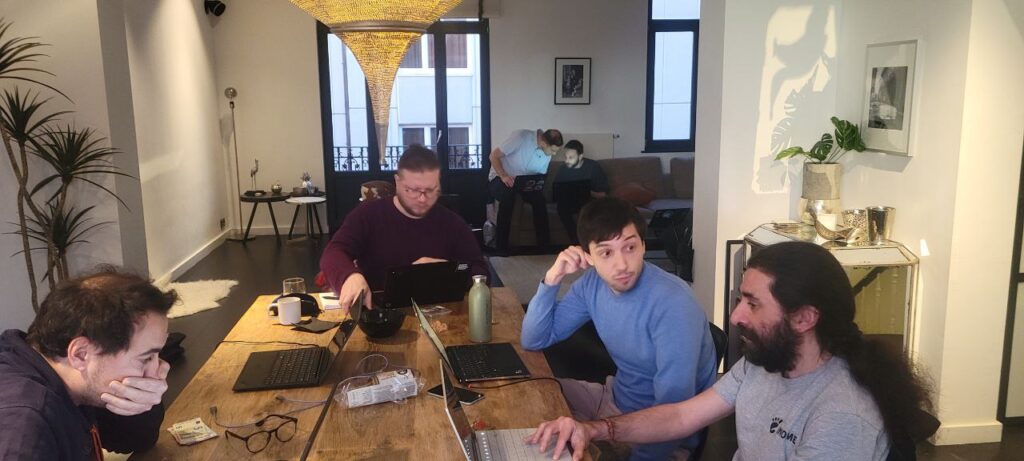We just had a GTK hackfest at FOSDEM. A good time for an update on whats new and exciting in GTK, with an eye towards 4.18.
 Requirements
Requirements
You can no longer call gdk_display_get_default() or gdk_display_open() before gtk_init(). This was causing problems due to incomplete initialization, so we made it fail with a (hopefully clear) error message. If you are affected by this, the usual fix is to just call gtk_init() as early as possible.
On Windows, we have a hard requirement on Windows 10 now. All older versions are long unsupported, and having to deal with a maze of ifdefs and unavailable APIs makes development harder than it should be. Dropping support for very old versions also simplifies the code down the stack, in Pango and GLib.
The same idea applies to macOS, where we now require macOS 10.15.
Spring cleaning
The old GL renderer has been removed. This may be unwelcome news for people stuck on very old drivers and hardware. But we will continue to make the new renderers work as well as possible on the hardware that they can support.
The X11 and Broadway backends have been deprecated, as a clear signal that we intend to remove them in the GTK 5. In the meantime, they continue to be available. We have also deprecated GtkShortcutsWindow, since it needs a new design. The replacement will appear in libadwaita, hopefully next cycle.
It is worth reminding everybody that there is no need to act on deprecations until you are actively porting your app to the next major version of GTK, which is not on the horizon yet.
Incremental improvements
Widget layout and size allocation has received quite a bit of attention this cycle, with the goal of improving performance (by avoiding binary search as much as possible) and correctness. Nevertheless, these changes have some potential for breakage, so if you see wrong or suboptimal layouts in applications, please let us know.
GTK has had difficulties for a while getting its pointer sizes right with fractional scaling on Wayland, but this should all be solved in GTK 4.18. No more huge pointers. Fixing this also required changes on the mutter side.
New beginnings
Accessibility in GTK 4.18 is taking a major step forward, with the new AccessKit backend, which gives us accessibility on Windows and macOS, for the very first time. The at-spi backend is still the default on Linux, and has seen a number of improvements as well.
And, maybe the biggest news: We have an Android backend now. It is still experimental, so you should expect some rough edges and loose ends. For example, there is no GL renderer support yet. But it is exciting that you can just try gtk4-demo on your phone now, and have it mostly work.
Enjoy!
This is a companion discussion topic for the original entry at https://blog.gtk.org/2025/02/01/whats-new-in-gtk-winter-2025-edition/